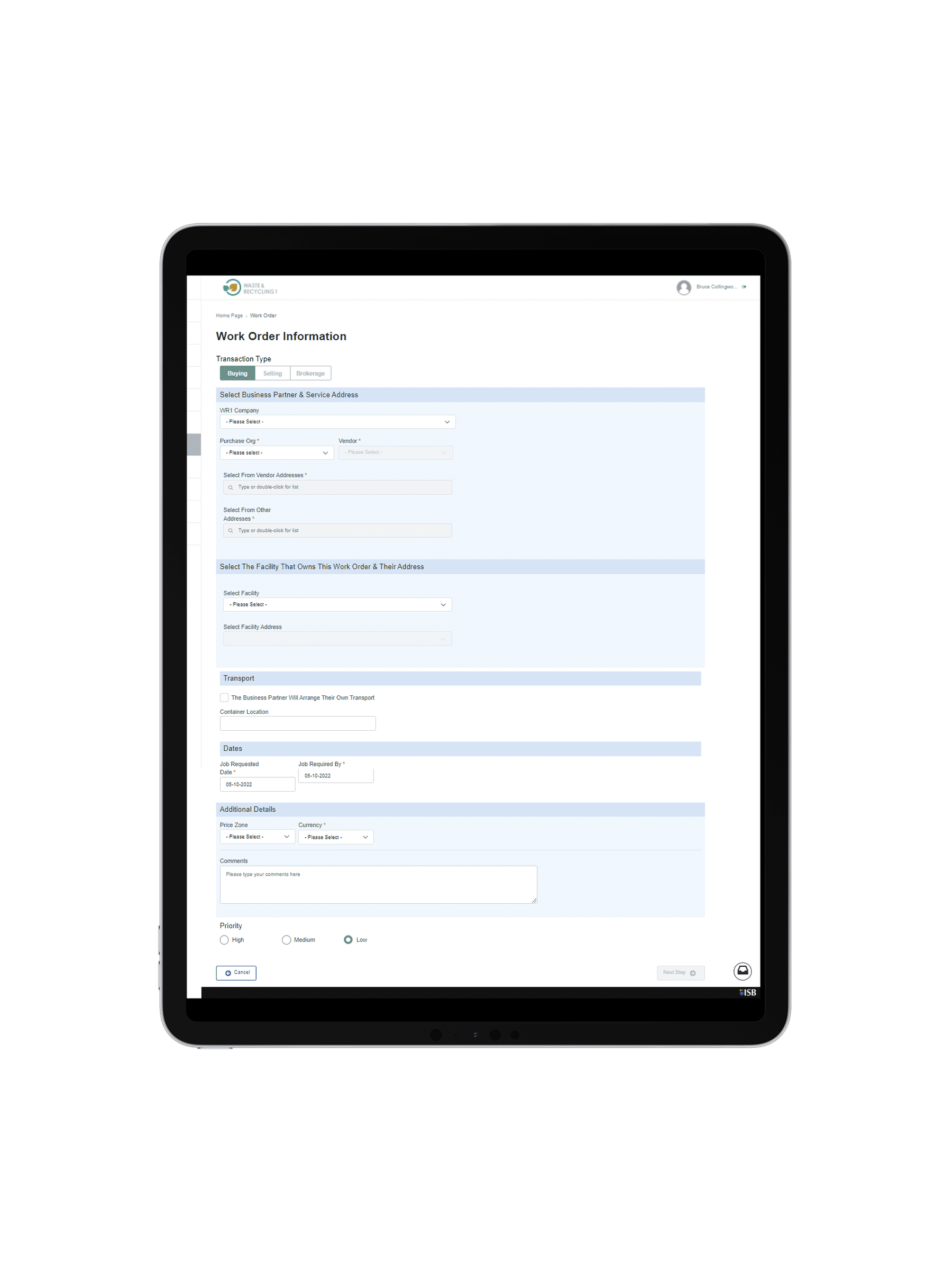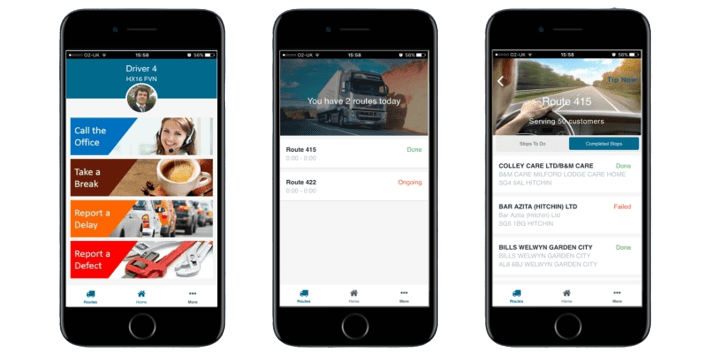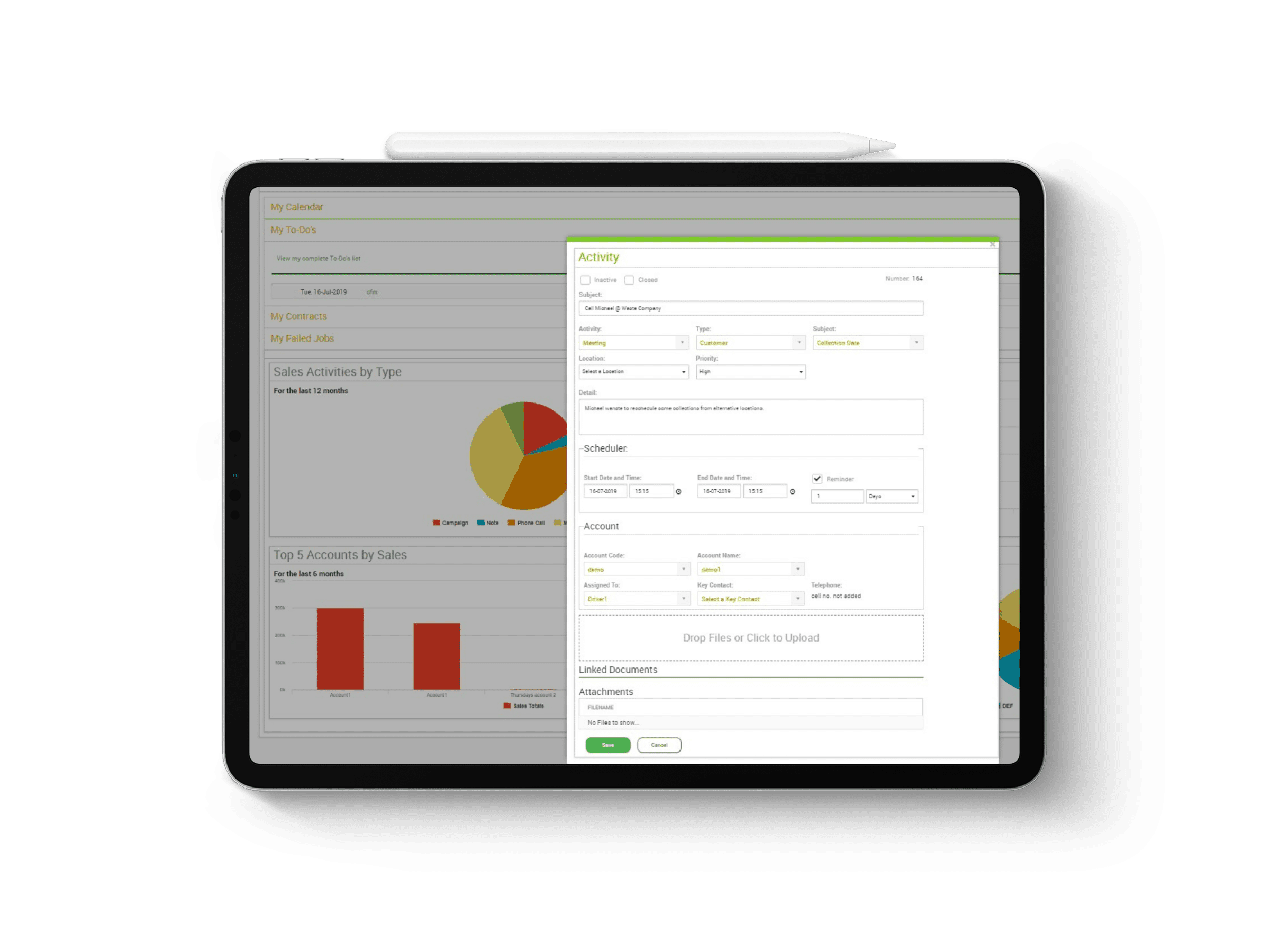What is the true cost of technical debt? Pritesh Pattni What’s the true cost of technical debt? Technical debt comes in a variety of guises, and occurs for many different reasons. However your tech debt is accrued, it has a future cost for your business – both in terms of the operational impact on your business, and the cost of getting your tech into a better position. We’ve talked in other articles about the seven main types of technical debt. The reasons that software developers can create technical debt will vary – and they will be different for each type of debt. These include: Prioritising speed over accuracy – sometimes, this is done in the knowledge that technical debt will occur. Developers and project leaders decide that it’s more important to release software quickly than to make sure it’s perfect. In some cases, there is a plan to manage software updates and releases to deal with that debt, but in others, teams simply take the hit without having a plan to improve quality. Lack of clear communication or collaboration – this often happens when more than one organisation is working on the software. For example, part of the development work may have been outsourced, but without the details of requirements, testing or outcomes fully explained. But it can also happen internally, particularly with larger teams, and this can have serious consequences for customers and users. Pressure to go to market – this can be particularly prevalent in traditional hand-coding projects, which often take longer because they require more people and use slower processes. Software is a highly competitive market, and success can be entirely down to getting your product to market ahead of the competition. But in the rush to get to market, project managers or senior leaders in the organisation may put developers under pressure to cut corners, reduce testing or remove features. The product gets to market first, but doesn’t have the quality it needs to achieve a market-leading position. Learning ‘on the job’ – this can happen when developers are working with a new system, language or database. There is often a significant learning curve, and so things may be missed, or incorrectly coded. This will result in technical debt, but it also improves the capabilities of the development team and they will build the knowledge they need to improve the software in the future. For organisations, getting into technical debt also happens for a variety of reasons. When you combine these with the software development technical debt issues, you can see that one can compound the other. Organisational technical debt can occur where: Fast solutions, not best solutions – as organisations grow, they need more technology. Often, this technology is critical to the next stage of growth, so there isn’t the time to evaluate the options properly. This leads to solutions being implemented that solve the immediate problem, but are not scalable or adaptable. Cost-cutting – any technology vendor will tell you that many organisations place the cost of a solution at the top of the priority list. So businesses will often end up with a solution that was cost-effective at the time of purchase, but becomes increasingly inefficient and ineffective as time goes on. That initial saving often turns into a long-term cost. Legacy systems from business change – when organisations merge, or a smaller organisation is acquired, it can lead to issues with legacy systems. Although this is often taken into consideration operationally, businesses may not assess the full cost of the technical debt caused by opting for one system over another. The true cost of technical debt will vary from company to company. But we’ve highlighted this example from a McKinsey report on technical debt because it illustrates just how quickly it can build, and the strategic cost it can have. “A large B2B business faced an agonizing quandary: its leadership team was considering dozens of modernization initiatives that could bring a $2 billion margin expansion opportunity. But 70 percent of them depended on technology that would cost a staggering $400 million—much higher than expected. The reason for such a high price tag? Its tech stack had become massively complex after years of building quick workarounds and one-off solutions to favor speed over good design for the long term.” What this shows is that organisations shouldn’t wait to assess their technical debt. They should start to look now at what is working and what isn’t, and find a low code development partner that can help them get back in the black. Why low code? Because it transforms the way that developers work, producing more cost-effective, flexible and scalable applications that work with the organisation, not against it. At ISB Global, we are a proud OutSystems partner. OutSystems is a globally-leading low code platform that delivers secure, efficient and versatile software to meet any challenge. Just get in touch with us today to find out more. Recommended Posts The synergy of design, code, and development The synergy of design, code, and development Pritesh Pattni The synergy of design, code, and development Like all disciplines, digital development works best when all the various elements are used… Read More Is your software future-proofed? Is your software future-proofed? Pritesh Pattni Is your software future-proofed? As we move rapidly towards full digital transformation, businesses are relying on a raft of software solutions to help… Read More An evolutionary approach to software engineering An evolutionary approach to software engineering Pritesh Pattni Evolution. The gradual development of something to make it even better. It’s this approach that underpins the low code software… Read More Where next? I’m an OutSystems Customer looking for Applications to accelerate my journey → I’m an OutSystems customer looking for patterns & features to accelerate my journey → I’m an OutSystems Customer using SAP and looking for an advanced integration engine → I’m an OutSystems customer and I need additional development support for my team →
Using OutSystems to Extend Your SAP System
Why You Should Use OutSystems to Extend Your SAP System Chris Williams We often talk to SAP customers, partners, and consultants who are worried that OutSystems competes with SAP. But the exact opposite is the case. OutSystems is a complementary tool that you can leverage to extract more value from your SAP platform with less effort. Table of contents: Built-In Flexibility and Integration SAP and OutSystems in Practice Keeping Data in Sync Every business needs to keep up with changing market conditions and new innovations. You need to stay competitive and focused – particularly in tough economic circumstances. From industrial or governmental regulation to global market forces, there are always pressures on your business to be leaner, stronger, and more efficient. To meet these demands, organizations must be flexible – all while maintaining standards in enterprise governance, financial reporting practices, corporate reporting and auditability for stakeholders. And so you need a reliable system that is working with you, not against you. From our perspective, the combination of SAP S4HANA best practice and OutSystems low-code gives you the best of both worlds. Or as defined by Gartner: SAP S4HANA is a world-class “system of record” and OutSystems allows the development of apps, which reflect the “system of differentiation and innovation”. Built-In Flexibility and Integration Why do we think this? Because both software platforms come with best practices, and can work together to give you a more rounded, agile solution — built for purpose, but ready for change. SAP is the original modern-day ERP. It boasts best practices for financial management, including procure to pay, order to cash and master data governance, to name a few. Years of innovation from SAP across all industries allows projects to focus on implementing best practices for budgeting, accounting processes, managing accounting and corporate reporting. Using the SAP configuration system allows customization, setting different business rules within business processes. This in turn allows businesses to implement best business practices in a short time. Organizations benefit from the experience of other users, and the continual development that’s part of the way SAP delivers its product. So, the obvious question is, if SAP is so great, why do you need OutSystems? Simply put, the OutSystems low-code platform delivers additional, ongoing innovation that helps your organization to become more competitive. It allows businesses to rapidly build and test new ideas and business processes without impacting the backbone of the business model. SAP integration with OutSystems is made easy with SAP’s well-defined integration models, processes and structures in SAP BTP. And OutSystems has the ability to orchestrate new business processes with multiple integrations easily – and often multiple applications – through the OutSystems Service Studio. To provide a user with the right information, right level of security to data, system processes for their job role, and to ensure auditable document flow without having to jump between multiple systems is why SAP and OutSystems compliment each other. SAP and OutSystems in Practice When we were designing our waste and recycling solution, Waste & Recycling One, we wanted a loosely-coupled application integration. Our aim was for bi-directional integration of both master data and transactional data. It made sense to use an industry-leading ERP platform – SAP – for the core finance, order to cash and procure to pay systems of record and compliance. We then leveraged OutSystems to build the unique logistical business scenarios and processes that are relevant to the fast-changing waste and recycling industry. You can read the full case study here → This allowed us to build a system that can manage the sector’s compliance, governance and legislation requirements without affecting the core SAP processes. Keeping Data in Sync In this example, if we add a new business partner, the payment terms attributed are important to SAP and are managed there. The NAICS code is important to OutSystems. So we built bi-directional integration to keep the data in sync. When a new business partner service agreement is created, it starts in OutSystems. The partner data is automatically sent to SAP, so by the time the new contract is ready for billing, all the details are in SAP and up to date with the finance data. The order can then be sent to the cash processes and the contract invoice number goes back into OutSystems. It’s a simple but very effective setup. Keeping the data in sync is easy. SAP records changes to the business objects it processes and submits via BTP. OutSystems web application framework uses its API adapters framework to send and receive data during the business process. Importantly, both SAP and OutSystems have very complementary code management between environments. This makes changes, updates, and bugs easy to manage – something we’ll talk about in a separate blog. Find out more about how we can use OutSystems low-code to work alongside your SAP system and deliver even more efficiencies, streamlining your business for the future. Originally posted here: https://www.outsystems.com/blog/posts/extend-sap-system/ Recommended Posts How to choose a low code platform partner How to choose a low code platform partner Pritesh Pattni If you have a technology project or digital transformation programme, you are probably considering a low code solution. Low code offers a range… Read More What is low code technology? And why should you consider it? What is low code technology? And why should you consider it? Pritesh Pattni The demand for new and upgraded technology isn’t going anywhere. The human race continues to adopt new technologies to… Read More What does it mean to work with an OutSystems Partner? What does it mean to work with an OutSystems Partner? Pritesh Pattni What does it mean to work with an OutSystems partner? When you’re planning a software project, you want to look for a development… Read More Where next? I’m an OutSystems Customer looking for Applications to accelerate my journey → I’m an OutSystems customer looking for patterns & features to accelerate my journey → I’m an OutSystems Customer using SAP and looking for an advanced integration engine →
Hauling & Logistics Manager
Hauling & Logistics Manager Manage the end-to-end process from resource management to automated execution. GET THE APP → Dynamic, real-time scheduling & optimisation. The Hauling & Logistics App manages the end-to-end process, meaning you can; assess the demand, manage resources, plan the routes, manage, and automate the execution to ensure Work Orders are fulfilled. Linked to the Driver App, for job-based planning or route based planning, it enables real-time visualisation of transport units, and drivers, allowing for time calculations, better customer service and better scheduling and optimisation. Learn more → Real-time visualisation of transport units. End-to-end process management. DISCUSS YOUR PROJECT → Join the smart community Subscribe You have been successfully Subscribed! Ops! Something went wrong, please try again.
Work Order Manager
Work Order Manager Full management, monitoring and reporting of Work Orders. GET THE APP → Full management, from creation to completion. The Work Order Manager drives operational business at the most granular level. It brings together elements such as; dates, customers, sites, suppliers, container, material code, pricing, the route, the truck/driver, instructions, compliance, and more. Ideally created from the contract, the work order can cover ad-hoc or scheduled activities, linking into the hauling and logistics process as necessary. The Work Order Manager enables full management, monitoring and reporting of Work Orders based on the live status of these jobs as they proceed through multiple business processes to completion. Learn more → Full management, monitoring & reporting. https://www.isb-smartsolutions.com/wp-content/uploads/2022/09/WO.webm Driving Operational Business. DISCUSS YOUR PROJECT → Join the smart community Subscribe You have been successfully Subscribed! Ops! Something went wrong, please try again.
DriviLogix App
DriviLogix Real Time Logistics Driver App. GET IN TOUCH → Challenge Most systems handle logistics as a sequential process; scheduling routes then passing them on for execution. This disconnect is the root cause for many operational problems, as in the real world, scheduling & execution are closely linked. Imagine a job couldn’t be executed, a truck breaks down and half of the jobs need to be rescheduled or you get an urgent, lucrative order from a new customer, and you want to dispatch it to the nearest truck. Solution DriviLogix handles these scenarios by working seamlessly with RoutiLogix, utilising the same data to provide one version of the truth. The app also works offline, smartly syncing data to/from when connection is re-established. The end-to-end logistics process can now be managed within one system. This mobile app unlocks the full potential of your organisation, enables you to make informed decisions and most importantly implement them in real time. Benefits With DriviLogix, you can now engage your end-to-end logistics process as one, in real time. The native mobile application allows you to capture driver feedback and react smartly using the full visibility to pro-actively identify problems. With key applications acting as one and in real-time, one version of the truth is finally a reality. Planners, drivers, managers now all have access to consistently shared data to enable smoother, more efficient logistics. Plan your project → Real-time interaction for drivers & planners. Logistics, planning & execution in one process. Join the smart community Subscribe You have been successfully Subscribed! Ops! Something went wrong, please try again.
SAP Mobile App Case Study
Case Study SAP Mobile App Harnessing the innovation of OutSystems to allow remote users to carry the power of SAP anywhere, anytime, on any device. DISCUSS YOUR IDEA → Challenge Faced with a decentralised user base, a complex SAP user interface and challenges with infrastructure, one facilities services company challenged ISB Global to take WR1 mobile; to reach 150 users across the UK and Ireland. Many companies face similar challenges; which is why ISB set out to create a truly mobile solution, integrate it with SAP and make it available on a subscription basis as a software-as-a-service (SaaS) solution. Solution The architectural complexities of delivering a SaaS solution and the need to connect to multiple ERPs meant a traditional mobile development approach would have taken too much time resource to develop and deploy. Utilising the OutSystems Platform the mobile application could be brought to market much faster – in a matter of weeks rather than months, thanks to OutSystems’ off-the shelf SAP integration and multi-tenancy capabilities. Benefits With tight integration to SAP, it provides field employees the ability to record and monitor customer service requests via mobile and web devices. Its intuitive and easy to use interface increases staff efficiency and reduces training needs. It is a 100% SAP integrated cloud solution that renders only the data needed to complete a job as efficiently as possible, guiding users through the process. Plan your project → Carry the power of SAP in your pocket. Real-time integration with on-premises ERPs. DISCUSS YOUR PROJECT → Join the smart community Subscribe You have been successfully Subscribed! Ops! Something went wrong, please try again.
Privacy Policy
Privacy policy PRIVACY NOTICE Last updated May 30, 2022 This privacy notice for ISB Global Limited (“Company,” “we,” “us,” or “our“), describes how and why we might collect, store, use, and/or share (“process“) your information when you use our services (“Services“), such as when you: Visit our websites at https://www.isb-global.com, https://www.isb-smartsolutions.com, or any website of ours that links to this privacy notice Engage with us in other related ways, including any sales, marketing, or events Questions or concerns? Reading this privacy notice will help you understand your privacy rights and choices. If you do not agree with our policies and practices, please do not use our Services. If you still have any questions or concerns, please contact us at info@isb-global.com. SUMMARY OF KEY POINTS This summary provides key points from our privacy notice, but you can find out more details about any of these topics by clicking the link following each key point or by using our table of contents below to find the section you are looking for. You can also click here to go directly to our table of contents. What personal information do we process? When you visit, use, or navigate our Services, we may process personal information depending on how you interact with ISB Global Limited and the Services, the choices you make, and the products and features you use. Click here to learn more. Do we process any sensitive personal information? We do not process sensitive personal information. Do you receive any information from third parties? We may receive information from public databases, marketing partners, social media platforms, and other outside sources. Click here to learn more. How do you process my information? We process your information to provide, improve, and administer our Services, communicate with you, for security and fraud prevention, and to comply with law. We may also process your information for other purposes with your consent. We process your information only when we have a valid legal reason to do so. Click here to learn more. In what situations and with which types of parties do we share personal information? We may share information in specific situations and with specific categories of third parties. Click here to learn more. How do we keep your information safe? We have organizational and technical processes and procedures in place to protect your personal information. However, no electronic transmission over the internet or information storage technology can be guaranteed to be 100% secure, so we cannot promise or guarantee that hackers, cybercriminals, or other unauthorized third parties will not be able to defeat our security and improperly collect, access, steal, or modify your information. Click here to learn more. What are your rights? Depending on where you are located geographically, the applicable privacy law may mean you have certain rights regarding your personal information. Click here to learn more. How do I exercise my rights? The easiest way to exercise your rights is by contacting us. We will consider and act upon any request in accordance with applicable data protection laws. TABLE OF CONTENTS 1. WHAT INFORMATION DO WE COLLECT? 2. HOW DO WE PROCESS YOUR INFORMATION? 3. WHAT LEGAL BASES DO WE RELY ON TO PROCESS YOUR PERSONAL INFORMATION? 4. WHEN AND WITH WHOM DO WE SHARE YOUR PERSONAL INFORMATION? 5. DO WE USE COOKIES AND OTHER TRACKING TECHNOLOGIES? 6. HOW LONG DO WE KEEP YOUR INFORMATION? 7. HOW DO WE KEEP YOUR INFORMATION SAFE? 8. DO WE COLLECT INFORMATION FROM MINORS? 9. WHAT ARE YOUR PRIVACY RIGHTS? 10. CONTROLS FOR DO-NOT-TRACK FEATURES 11. DO CALIFORNIA RESIDENTS HAVE SPECIFIC PRIVACY RIGHTS? 12. DO WE MAKE UPDATES TO THIS NOTICE? 13. HOW CAN YOU CONTACT US ABOUT THIS NOTICE? 14. HOW CAN YOU REVIEW, UPDATE, OR DELETE THE DATA WE COLLECT FROM YOU? 1. WHAT INFORMATION DO WE COLLECT? Personal information you disclose to us In Short: We collect personal information that you provide to us. We collect personal information that you voluntarily provide to us when you express an interest in obtaining information about us or our products and Services, when you participate in activities on the Services, or otherwise when you contact us. Personal Information Provided by You. The personal information that we collect depends on the context of your interactions with us and the Services, the choices you make, and the products and features you use. The personal information we collect may include the following: names phone numbers email addresses mailing addresses job titles contact preferences Sensitive Information. We do not process sensitive information. All personal information that you provide to us must be true, complete, and accurate, and you must notify us of any changes to such personal information. Information automatically collected In Short: Some information — such as your Internet Protocol (IP) address and/or browser and device characteristics — is collected automatically when you visit our Services. We automatically collect certain information when you visit, use, or navigate the Services. This information does not reveal your specific identity (like your name or contact information) but may include device and usage information, such as your IP address, browser and device characteristics, operating system, language preferences, referring URLs, device name, country, location, information about how and when you use our Services, and other technical information. This information is primarily needed to maintain the security and operation of our Services, and for our internal analytics and reporting purposes. Like many businesses, we also collect information through cookies and similar technologies. You can find out more about this in our Cookie Notice: https://www.isb-smartsolutions.com/cookie-policy/. The information we collect includes: Log and Usage Data. Log and usage data is service-related, diagnostic, usage, and performance information our servers automatically collect when you access or use our Services and which we record in log files. Depending on how you interact with us, this log data may include your IP address, device information, browser type, and settings and information about your activity in the Services (such as the date/time stamps associated with your usage, pages and files viewed, searches, and other actions you take such as which features you use), device event information (such as system activity, error reports (sometimes called “crash dumps”), and hardware settings). Device Data. We collect device data such as information about your computer, phone, tablet, or other device you use to access the Services. Depending on the device used, this








